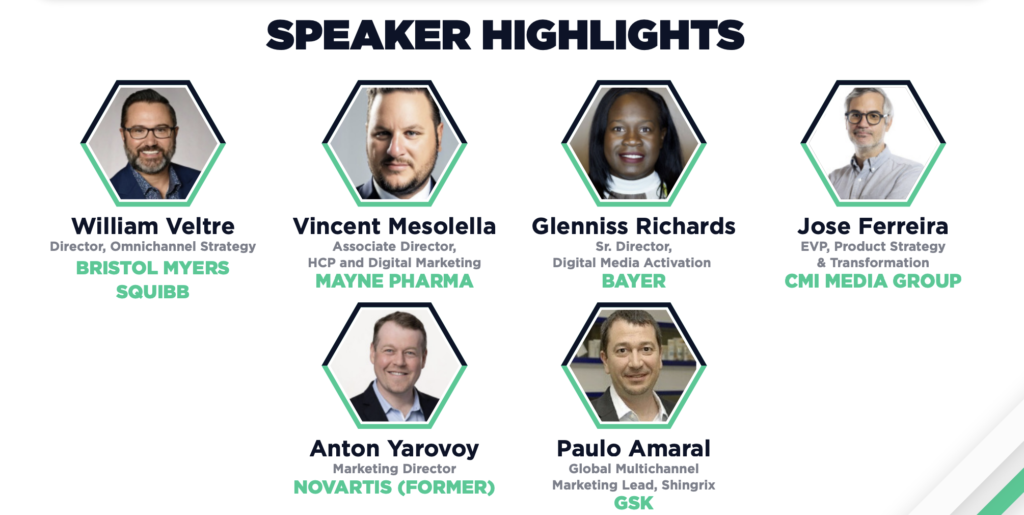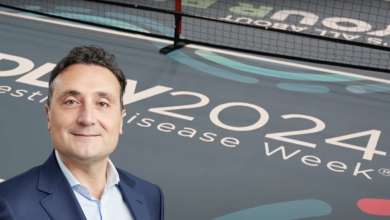What’s Next in Pharma Marketing: 5 Key Take-Aways

The pharmaceutical marketing landscape is rapidly evolving, and continuing education will be more important than ever. As we kick off the spring conference season, PharmaLeaders was pleased to attend What’s Next in Pharma Marketing, an informative online conference that highlighted several key trends and strategies. Speakers included Glenniss Richards from Bayer, Jose Ferreira from CMI and Anton Yarovoy, formerly at Novartis.

At the heart of several engaging presentations and subsequent panel discussions was the drive towards hyper-personalization, focusing on leveraging Digital Asset Management (DAM) systems, data targeting and ChatGPT to create highly customized content that resonates with each unique customer. Glenniss Richards noted the importance of working closely with the brand team and data analytics team to define KPIs, and then using a measurable multi-touch campaign to reach those goals, while Anton Yarovoy highlighted how both brand teams and sales reps are becoming increasingly adept at using hyper-personalized content in their HCP interactions.
Related to hyper-personalization was the challenge of content saturation. As consumers and HCPs become increasingly overwhelmed by the sheer volume of information available, the importance of tailored content becomes clear. Utilizing tools like social listening, ChatGPT, and intent data, companies can fine-tune their messaging to not only address customer needs more effectively but also to enhance engagement by sending content that feels personal and relevant. Towards that end, Jose Ferreira from CMI discussed the importance of automating and orchestrating the omnichannel customer journey so that brands can deliver personalized content at scale.
Panel discussions delved into the broader ecosystem of pharma marketing, emphasizing the need for a holistic approach that considers multiple strategic partners, consolidated analytics, and the integration of first-party and third-party data sources. The conversation also touched on the use of real-time data and measurement solutions to better understand and target audiences.
Reflecting on the future, panelists shared their excitement about the potential of AI and other technologies to transform pharma marketing. Bill Veltre from BMS emphasized the importance of using data to tell better stories, while Paulo Amaral from GSK and Vincent Mesolella from Mayne Pharma were both passionate about the potential of AI and the need to educate and integrate AI with a broad range of internal stakeholders. The panel discussion also touched on generational shifts in the marketplace as millennials start to require greater access to healthcare and health-related information, their channel preferences will impact marketing efforts. From AI to personalized robots to virtual chatbots, the message was clear: embracing innovation is not optional but necessary for staying relevant in a rapidly changing industry.
Overall, five key themes emerged throughout the day:
1). Embrace Hyper-Personalization: Utilize advanced technologies like Digital Asset Management (DAM) and AI (e.g., ChatGPT) to craft personalized content at scale. This approach addresses the challenge of content saturation and increases engagement by making each customer feel uniquely understood and valued.
2). Integrate Sales and Marketing Efforts: Foster a collaborative environment between sales and marketing teams, leveraging AI tools to streamline communication and content delivery. Training sales reps to use AI effectively can bridge the gap between personalized marketing and sales strategies, enhancing overall customer experience.
3). Shift Focus to Unbranded Content: Recognize that a significant portion of branded content fails to reach its audience. Pivot towards creating and promoting unbranded content, surveys, and informational materials that are more likely to engage customers and meet their informational needs.
4). Leverage Analytics and Real-time Data: Adopt a holistic approach to audience understanding by integrating first-party data, third-party data sources, and data analytics. This comprehensive view allows for more effective targeting and personalization, driving engagement and conversion rates.
5). Future-Proof with Technology and Innovation: Stay ahead of the curve by incorporating technologies like AI, machine learning, and dynamic creative optimization (DCO) into marketing strategies. These tools not only allow for greater personalization but also enable real-time adjustments based on customer interactions, ensuring relevance and impact.
These takeaways highlight the importance of leveraging technology, fostering collaboration, and focusing on customer-centric strategies in the evolving landscape of pharma marketing. As the industry continues to navigate these changes, staying informed and adaptable will be key to success. Be sure to stay tuned as we cover several upcoming conferences and events!





